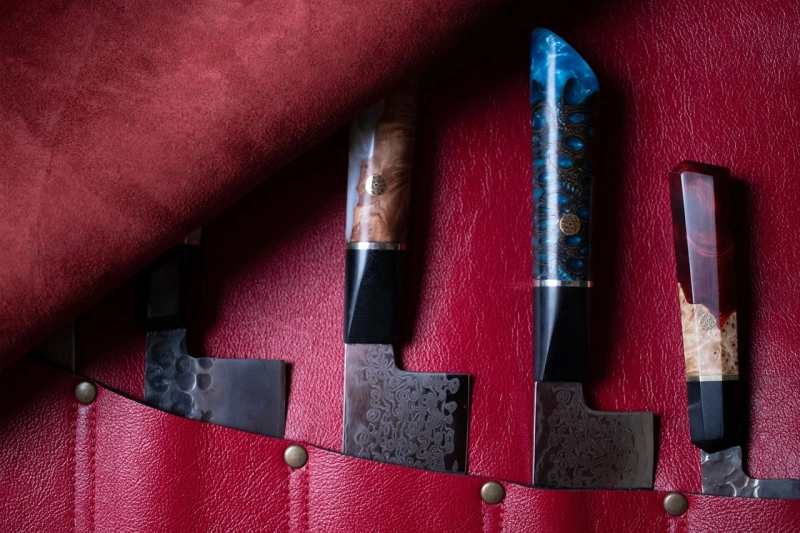One of the common traits of Japanese knives Australia is the WA handle. This is a traditional Japanese knife handle and just like a lot of aspects of Japanese kitchen knives, the design is functional, simple and beautiful. There are two simple styles of knife handles- Japanese-style handles and Westernised handles. Both the Yo and WA handle has a lot of utility and your choice will come down to your preferred ergonomics, weight and which one you think is more beautiful.
The WA handle is a traditional Japanese handle and just like other aspects of the Japanese, the design is functional, simple and beautiful. A feature that is common to the WA handles is that the geometry of the knife indexes the blade in the hand of the user. Handle profiles work to ensure the blade fits nicely in the handle of the user while naturally aligning in the vertical plane perpendicular to your chopping surface. While there are a few traditional handle shapes, knife makers are creating a wide range of signature styles.
Oval handles
These types of handles orient the knife in a vertical plane. They offer good knife control and are most comfortable for most users.
The octagonal handle
This is also known as the WA handle and it orients the knife in the vertical plane. It offers very good control and is most common among professional users of Japanese kitchen knives.
D-shape handle
This handle shape strongly orients the knife in the vertical plane and it offers excellent control and feedback. It is the most premise and not ambidextrous.
Shield handles
This type of handle orients the knife in the vertical plane, it offers good control and is excellent for smaller hands. It can also be rounded on the bottom.
Materials
Traditionally, handles are adorned with a collar that is made of buffalo horn. This protects the softer wood made of magnolia. In modern times, Japanese knife handles come in a variety of materials such as high-end futuristic options like carbon fibres and titanium.
Balance and ergonomics
When compared to Western knife handles, Japanese handles are lighter. There is less steel in the handle so the center of balance of the knife is further toward the blade. The balance is more towards the tip of the blade than at the handle. The balance of Japanese knives is further enhanced by ensuring the handles are made longer for a heavier or longer blade such as the Yanagi or Suji or shorter for a paring or putty knife. The light weight of Japanese handles makes the knives feel lighter overall and this gives the user delicate control and touch when cutting.
The strength
Some people worry that this type of handle may be weak but unless you are using your Japanese knives Australia to drive nails into a wall then they will hold up perfectly. Because they are not pinned or riveted in place, they are also easier to replace if something happens to them. You do not have to worry about their strength when using them.


